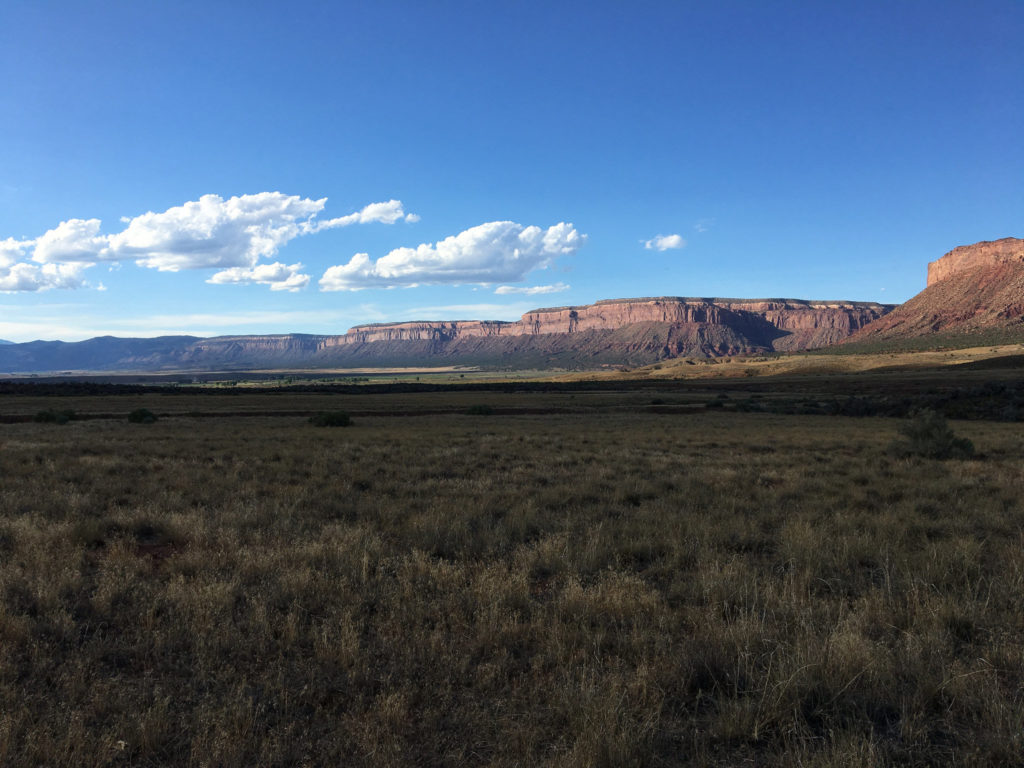
We managed to spend a whole day on the road today without getting out of Los Angeles County.
That was partly due to a detour to the Santa Monica Pier as we headed out of town. And then a second detour to the REI in Santa Monica. And then a third detour to Peet’s Coffee in Santa Monica. (We’re allegedly going camping and need to be real prepared.)
The main detour of the day was a search for the site of St. Francis Dam, which collapsed in 1928, killed at least 450 people, ended the career of William Mulholland, and wrought major changes in dam design and engineering.
We finally made it to the dam site in the waning half of the afternoon and spent a half an hour or so hiking part of the area (it’s worth more time; I hope to come back … soon-ish).
There is a lot of great background material on what happened at the dam. The best may be from J. David Rogers, a Berkeley-trained professor of geological engineering at the Missouri University of Science and Technology in Rolla who has spent decades investigating why the dam failed and documenting the disaster’s effect on the practice of engineering.
In one of his many papers and presentations on St. Francis Dam, he summarizes the catastrophe:
“The dam failed catastrophically near midnight on March 12/13, 1928, in its second year of operation. … The resulting flood swept down San Francisquito Canyon, with an initial depth of 140 feet above the streambed. About five minutes later, the flood destroyed a powerhouse (and workers’ community) approximately 7,300 feet downstream, killing 126 of the 129 people living there. The flood wave swept on down the canyon, widening considerably at its juncture with the Santa Clara River coming out of Soledad Canyon. It then swept through Castaic Junction and on down the Santa Clara River Valley, blasting a Southern California Edison construction camp (killing 84 of the 140 workers encamped there), thence inundating the migrant farm community at Camulos, before skimming the lower elevations of the established cities of Fillmore, Santa Paula, Saticoy, and Montalvo. The flood waters reached the ocean around 5:30 a.m., after traveling approximately 52 miles. The official death toll was 432 persons, making it the greatest engineering tragedy recorded in America in the 20th century. But those official statistics did not include Mexican migrant farm workers, of which, an unknown number also perished. One hundred seventy-nine of the listed victim’s bodies were never recovered, including those of damkeeper Tony Harnesfaeger and his 6-year-old-son.”
As to what that disaster looked like, here’s one great resource, by way of the Los Angeles Times: “From the Archives: The 1928 St. Francis Dam collapse.”
The magnitude of the tragedy is a little hard to grasp standing at the dam site. There are some monumental heaps of rubble. If you look around, you can see evidence that the piles of broken concrete were part of something bigger.
But nature is reclaiming the site. A cool wind blew up through the cottonwoods and maples that have taken over the streambed where the calamity began. San Francisquito Creek sounded fresh and alive.
One note: It’s a little odd that there’s no official recognition of the site beyond a state historical marker about a mile and a half away — at the powerhouse that was destroyed in the 1928 torrent. This is a place — apparently national forest land — that deserves to be remembered and interpreted.












